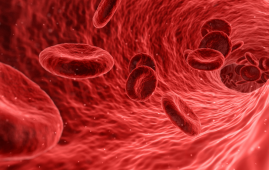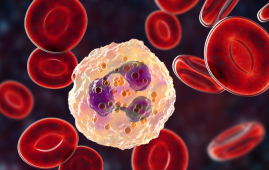

New Evidence Links Viridans Streptococci to Atherosclerosis
Hidden Bacterial Threat in Coronary Plaques
Atherosclerosis has long been understood as a chronic inflammatory process, largely triggered by oxidized LDL. Yet, recent findings published in the Journal of the American Heart Association suggest that oral bacteria, particularly viridans streptococci, may play a more active role than previously assumed.
Researchers analyzing coronary plaques from 121 sudden death autopsies and 96 surgical patients discovered bacterial DNA in over 60% of plaque samples. Notably, viridans streptococci, commonly associated with dental plaque and infective endocarditis, were detected in 42–43% of cases.
Explore All Cardiology CME/CE Conferences and Online Courses
“This evidence suggests that viridans streptococci are not innocent bystanders in the plaque.”
The authors emphasized, pointing toward a possible infection-driven mechanism of plaque instability.
How Oral Bacteria Survive and Trigger Inflammation
Viridans streptococci appear to establish biofilm colonies within arterial walls, effectively evading immune surveillance. Within these biofilms, bacteria remain dormant until triggered, at which point they disperse and activate TLR2-mediated immune pathways.
At rupture-prone plaque sites, dispersed streptococci triggered cytokine release and matrix metalloproteinase (MMP) activity, weakening the fibrous cap and increasing the risk of atherothrombosis and myocardial infarction.
The study highlights that poor dental health and transient bacteremia from routine dental procedures may contribute to bacterial seeding in plaques, raising important clinical considerations for both cardiology and dentistry practices.
Implications for Cardiovascular Care and Research
The association between oral bacteria and cardiovascular events is not entirely new, but this study strengthens the hypothesis that dormant bacterial biofilms can drive plaque vulnerability.
Importantly, the findings align with the broader understanding of inflammation in secondary cardiovascular events, as seen in the CANTOS trial. They also raise the possibility of future interventions, including:
- Targeted antimicrobial therapy during acute myocardial infarction.
- Preventive dental care as a strategy to lower systemic cardiovascular risk.
- Novel diagnostic tools for detecting bacterial biofilms in atherosclerotic plaques.
For healthcare professionals, the message is clear: oral health may be more tightly linked to cardiovascular outcomes than previously recognized.
For More Information
Karhunen, P. J., Pessi, T., Karhunen, V., et al. (2025). Viridans Streptococcal Biofilm Evades Immune Detection and Contributes to Inflammation and Rupture of Atherosclerotic Plaques. Journal of the American Heart Association. doi: https://doi.org/10.1161/JAHA.125.041521. https://www.ahajournals.org/doi/10.1161/JAHA.125.041521
more recommended stories
 Fat-Regulating Enzyme Offers New Target for Obesity
Fat-Regulating Enzyme Offers New Target for ObesityKey Highlights (Quick Summary) Researchers identified.
 Spatial Computing Explains How Brain Organizes Cognition
Spatial Computing Explains How Brain Organizes CognitionKey Takeaways (Quick Summary) MIT researchers.
 Gestational Diabetes Risk Identified by Blood Metabolites
Gestational Diabetes Risk Identified by Blood MetabolitesKey Takeaways (Quick Summary for Clinicians).
 Phage Therapy Study Reveals RNA-Based Infection Control
Phage Therapy Study Reveals RNA-Based Infection ControlKey Takeaways (Quick Summary) Researchers uncovered.
 Pelvic Floor Disorders: Treatable Yet Often Ignored
Pelvic Floor Disorders: Treatable Yet Often IgnoredKey Takeaways (Quick Summary) Pelvic floor.
 Urine-Based microRNA Aging Clock Predicts Biological Age
Urine-Based microRNA Aging Clock Predicts Biological AgeKey Takeaways (Quick Summary) Researchers developed.
 Circadian Control of Neutrophils in Myocardial Infarction
Circadian Control of Neutrophils in Myocardial InfarctionKey Takeaways for HCPs Neutrophil activity.
 E-Cigarette Use and Heart Attack Risk in Former Smokers
E-Cigarette Use and Heart Attack Risk in Former SmokersKey Takeaways for Clinicians and Nurses.
 36-Week Pre-eclampsia Screening May Reduce Term Risk
36-Week Pre-eclampsia Screening May Reduce Term RiskA New Preventive Strategy for Term.
 Cardiovascular Risk and Sudden Cardiac Death in Diabetes
Cardiovascular Risk and Sudden Cardiac Death in DiabetesRising Sudden Cardiac Death (SCD) Risk.

Leave a Comment